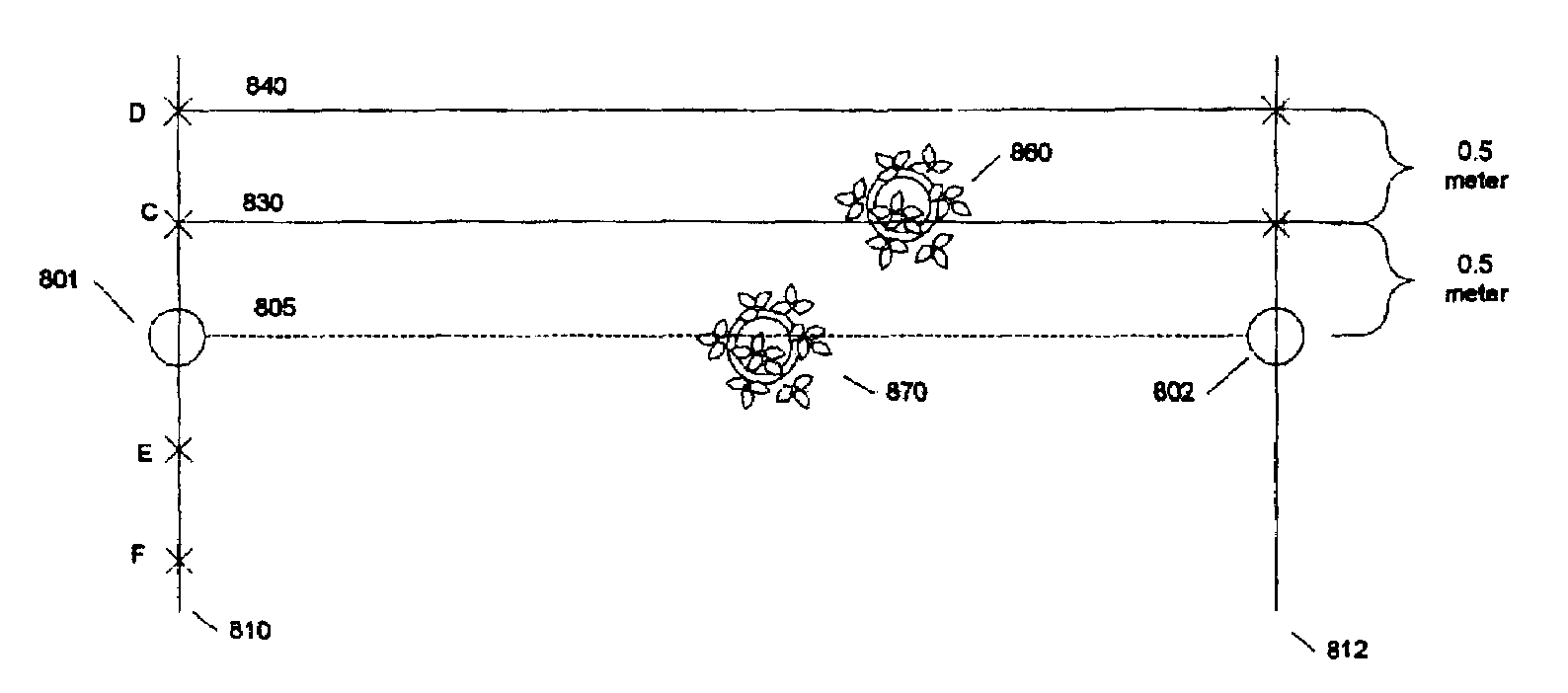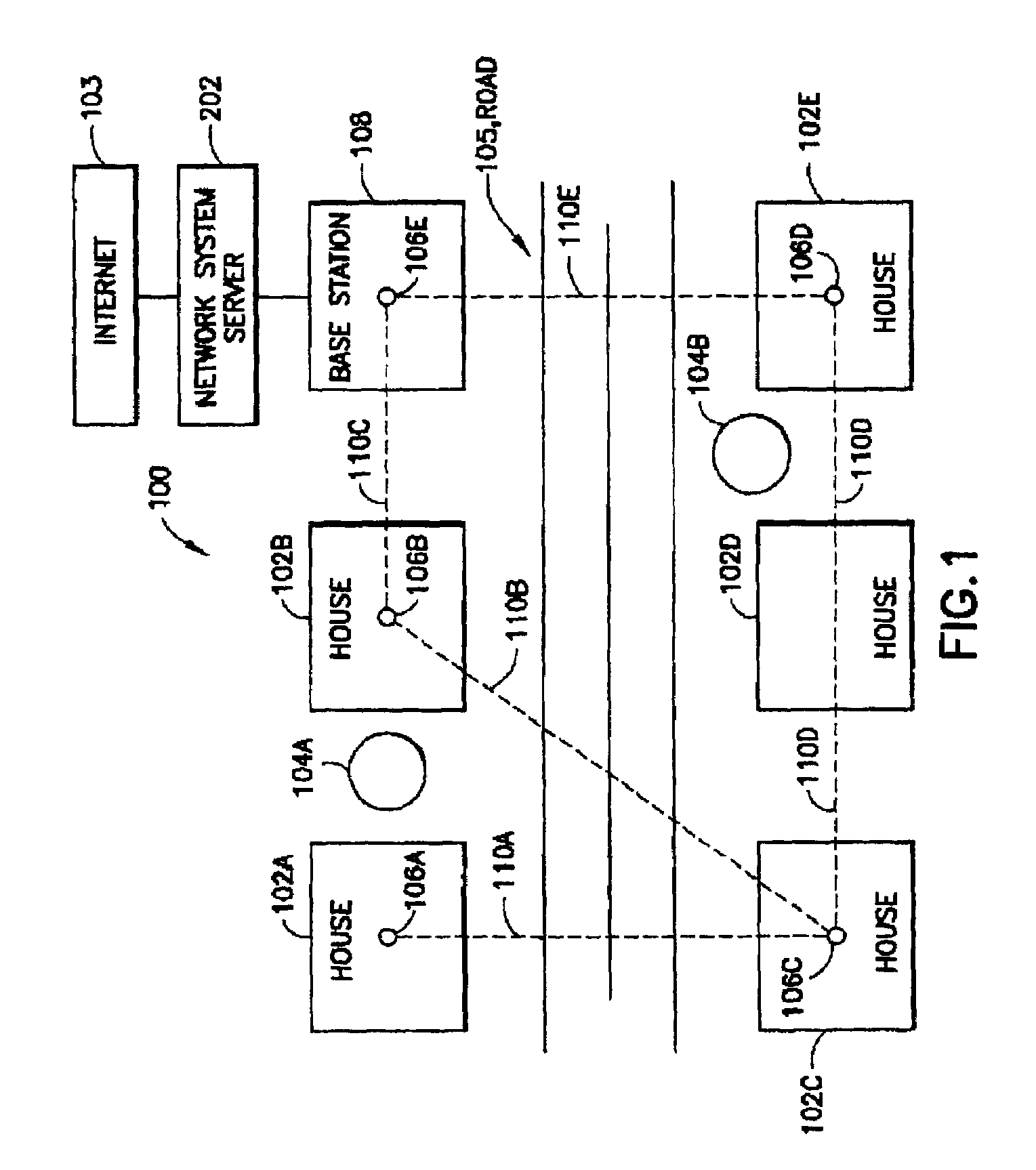Method and system for automatically determining lines of sight between nodes
a technology of infrared mesh network and automatic determination, which is applied in the field of wireless infrared mesh network for automatically determining lines of sight between nodes, can solve the problems of slow consumer connection, large media file size, and inability to receive large media files, and the ability of commercial services to provide rich, and the effect of rapidly outstripping the ability of the typical consumer to receive those files
- Summary
- Abstract
- Description
- Claims
- Application Information
AI Technical Summary
Benefits of technology
Problems solved by technology
Method used
Image
Examples
Embodiment Construction
[0038]With reference now to the drawing Figures, embodiments of the invention are shown and described wherein like elements are indicated by like reference numerals throughout.
[0039]With reference first to FIG. 1, a diagram of a residential neighborhood 100 is shown including multiple houses indicated at 102A–E. As is typical in neighborhoods, trees or other natural obstacles exist, indicated at 104A&B, which may block lines of sight between adjoining houses. In accordance with the present invention, a series of infrared network nodes, indicated at 106A–E, are positioned on the upper, outer surfaces of the homes, for example the roofs. Note that house 102D has elected not to receive services from the described network, and so no network node is positioned on that house. Although only houses are shown in FIG. 1, it will be obvious to those skilled in the art that the nodes may be mounted on structures other than houses, such as apartment building, office buildings and the like. It is...
PUM
 Login to View More
Login to View More Abstract
Description
Claims
Application Information
 Login to View More
Login to View More - R&D
- Intellectual Property
- Life Sciences
- Materials
- Tech Scout
- Unparalleled Data Quality
- Higher Quality Content
- 60% Fewer Hallucinations
Browse by: Latest US Patents, China's latest patents, Technical Efficacy Thesaurus, Application Domain, Technology Topic, Popular Technical Reports.
© 2025 PatSnap. All rights reserved.Legal|Privacy policy|Modern Slavery Act Transparency Statement|Sitemap|About US| Contact US: help@patsnap.com



